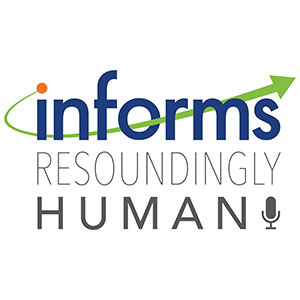

BALTIMORE, MD, May 24, 2025 – Most anti-human trafficking efforts focus on breaking up sex sales; however, new research in the INFORMS journal Manufacturing & Service Operations Management is turning its attention to where trafficking truly begins – recruitment. Using machine learning to analyze millions of online ads, researchers at the University of Pennsylvania have uncovered patterns that link deceptive job offers to sex trafficking networks. By mapping the connections between recruitment and sales locations, the study reveals a hidden supply chain – one that can now be exposed and interrupted earlier in the trafficking process.

Drugs being explicitly developed to treat rare diseases are getting more expensive.

Old technology is behind the recent ongoing delays and cancellations at Newark Liberty International Airport, but newer technology will be an important part of the solution.
Resoundingly Human Podcast
An audio journey of how data and analytics save lives, save money and solve problems.


Media Contact
Jeff Cohen
Chief Strategy Officer
INFORMS
Catonsville, MD
[email protected]
443-757-3565
INFORMS in Focus
Explore our resources for multiple topics including:
Supply Chain
View Resources on Supply ChainINFORMS in the News
What are you looking for?


How Trump tariffs on steel, aluminum may impact funeral expenses
CHARLOTTE, N.C. (WBTV) - Burying a loved one can be a difficult time, and it can also be an expensive process. With the 25% tariff on aluminum and steel, it’s costing more to produce a key element in most funerals.

Study finds ChatGPT mirrors human decision biases in half the tests
Can we really trust AI to make better decisions than humans? A new study says … not always. Researchers have discovered that OpenAI’s ChatGPT, one of the most advanced and popular AI models, makes the same kinds of decision-making mistakes as humans in some situations—showing biases like overconfidence of hot-hand (gambler’s) fallacy—yet acting inhuman in others (e.g., not suffering from base-rate neglect or sunk cost fallacies).

Dash to the dealership?: Local consumers, car sellers brace for auto tariffs to kick in Wednesday
NORTHAMPTON — Car buyers who have been prolonging the need for a car suddenly have a very good reason to act — cold hard cash.

New Study Finds that Over 95% of Sponsored Influencer Posts on Twitter Were Not Disclosed
BALTIMORE, MD, April 3, 2025 – New research in the peer-reviewed journal Marketing Science has found that 95% of influencer posts on Twitter (now X), which are sponsored, are not disclosed.
INFORMS Magazines

OR/MS Today is the INFORMS member magazine that shares the latest research and best practices in operations research, analytics and the management sciences.
Access OR/MS Today Magazine
Analytics magazine showcases articles and research reports based on big data, AI, machine learning, data analytics and other new-age technologies.
Access Analytics Magazine
